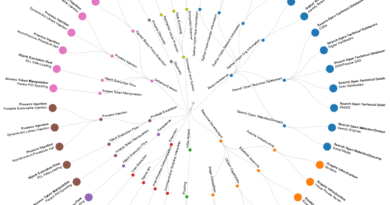Leading Vulnerability Scanners: Benefits and Use Cases
Introduction to Vulnerability Scanners
As cyber threats continue to increase, the importance of cybersecurity measures cannot be overstated. One critical aspect of cybersecurity is vulnerability scanning. Vulnerability scanners are automated tools that identify potential vulnerabilities in computer systems, applications, and networks. These tools are essential for organizations of all sizes to identify and remediate vulnerabilities before they can be exploited by hackers.
=== How to Choose the Best Vulnerability Scanner
Choosing the right vulnerability scanner can be challenging, given the many tools available. A good starting point is identifying your organization’s specific needs. Factors to consider include the size of your network, the number of devices on your network, and the types of systems and applications you use. Other considerations include the level of customization you require, the scan speed, and the accuracy of the tool.
It is also important to consider the support and user community provided by the vendor. Organizations need to ensure that the vendor provides prompt and reliable support, as well as a platform for users to share their experiences and best practices. Finally, it’s wise to choose a tool that can integrate with other cybersecurity tools you might be using for comprehensive protection.
=== Benefits of Leading Vulnerability Scanners
Leading vulnerability scanners offer numerous benefits to organizations, including identifying vulnerabilities before they can be exploited, reducing the risk of data breaches, and improving regulatory compliance. These tools provide an in-depth understanding of the security posture of your organization and give you actionable insights into how to improve it. Vulnerability scanners can also help organizations prioritize their remediation efforts, ensuring that critical vulnerabilities are addressed first.
Another benefit is that vulnerability scanners automate the scanning process, reducing the time and resources necessary for manual testing. This makes it easier for organizations to conduct frequent scans of their systems and identify vulnerabilities in real-time.
=== Use Cases for Vulnerability Scanners
Organizations across industries use vulnerability scanners to identify and remediate potential security risks. Some common use cases include:
- Network discovery and mapping
- Application security testing
- Detection of malicious software and malware
- Compliance with regulatory requirements
- Scanning cloud infrastructure and applications
In short, vulnerability scanners are useful for any organization looking to secure their IT environment proactively.
=== Top Vulnerability Scanners in the Market
Several vulnerability scanners are available in the market, each with its unique capabilities. Some of the leading tools include:
- Nessus
- Rapid7
- Qualys
- Acunetix
- OpenVAS
- Nexpose
Organizations can take advantage of free trials offered by these vendors to assess which tool best meets their needs.
=== How to Implement and Manage Vulnerability Scanning
Implementing and managing vulnerability scanning requires a well-defined process that involves several steps, including setting up the scanner, running scans, analyzing the results, and remediation of vulnerabilities. Organizations must ensure that the scanner is configured correctly, test the scanner to ensure it works correctly, and schedule scans appropriately.
Organizations must also prioritize remediation efforts based on the vulnerability’s criticality and impact on the system. Regular reporting and tracking of progress help ensure that remediation efforts are ongoing and that vulnerabilities are addressed in a timely manner.
In conclusion, vulnerability scanners are essential tools that help organizations identify and remediate potential security risks proactively. Choosing the right tool for your organization requires careful consideration of several factors, including the size of your network, the types of systems and applications you use, and your compliance needs. Leading vulnerability scanners can provide many benefits, including reducing the risk of data breaches, improving regulatory compliance, and reducing the time and resources required for manual testing. Organizations must ensure that they have a well-defined process for implementing and managing vulnerability scanning to ensure optimal results.



